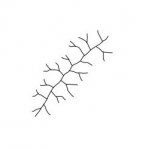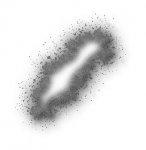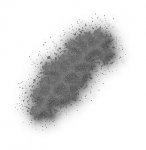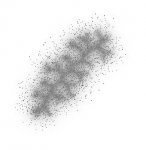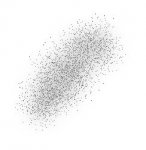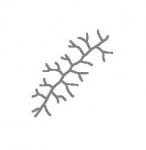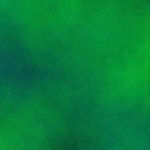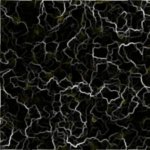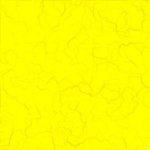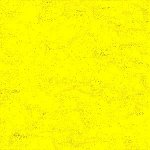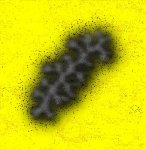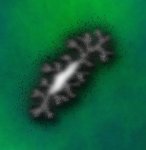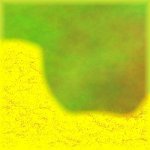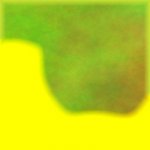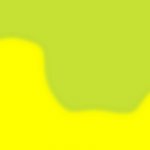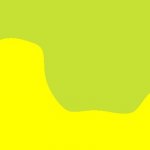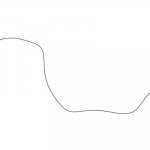Jürgen Hubert
First Post
I've figured out a new way of creating mountains.
Load a line drawing of the mountain ridges (as detailed in the earlier tutorials) into GIMP. (First Attachment)
Select the black lines with the "Select by Color" tool. Since line art is probably too small to easily select, just click on the white areas and then use Selection->Invert. Grow the selection by 1 px with Selection->Grow, move to a transparent layer (call it "Baseline"), and bucket fill the selection with a nice, dark gray color. Make the original line art invisible. (Second Attachment)
Copy the Baseline layer and and make it invisible, and apply a Gaussian Blur with 50 px to the copy. Copy the blurred layer again, and apply the "Dissolve" mode to the upper layer. Merge these two layers. (Third Attachment)
Repeat the process (starting from the Baseline layer), but now only apply a Gaussian Blur of 30 px. Do it again with 10 px. Merge the three layers. (Fourth Attachment)
Copy the merged layer. Apply a black Drop Shadow with a Displacement of 8/8, a blur radius of 15, and an opacity of 80% to the upper layer. Apply Filter->Artistic->Oilify with a mask size of 3 to the lower layer. (Fifth Attachment)
That's basically it - but to top it off, let's give the mountain a snow cover. Go to the line art drawing again. Select the white areas with the "Select by Color" tool. Invert the selection and enlarge it by 10 px. Shrink it again by 30 px. Make the line art invisible again and bucket fill the selection on a new, empty layer with white. Chose Selection->None and apply a Gaussian Blur of 15 px. See the Sixth Attachment for the results.
I think that looks better than the earlier attempts, doesn't it?
Load a line drawing of the mountain ridges (as detailed in the earlier tutorials) into GIMP. (First Attachment)
Select the black lines with the "Select by Color" tool. Since line art is probably too small to easily select, just click on the white areas and then use Selection->Invert. Grow the selection by 1 px with Selection->Grow, move to a transparent layer (call it "Baseline"), and bucket fill the selection with a nice, dark gray color. Make the original line art invisible. (Second Attachment)
Copy the Baseline layer and and make it invisible, and apply a Gaussian Blur with 50 px to the copy. Copy the blurred layer again, and apply the "Dissolve" mode to the upper layer. Merge these two layers. (Third Attachment)
Repeat the process (starting from the Baseline layer), but now only apply a Gaussian Blur of 30 px. Do it again with 10 px. Merge the three layers. (Fourth Attachment)
Copy the merged layer. Apply a black Drop Shadow with a Displacement of 8/8, a blur radius of 15, and an opacity of 80% to the upper layer. Apply Filter->Artistic->Oilify with a mask size of 3 to the lower layer. (Fifth Attachment)
That's basically it - but to top it off, let's give the mountain a snow cover. Go to the line art drawing again. Select the white areas with the "Select by Color" tool. Invert the selection and enlarge it by 10 px. Shrink it again by 30 px. Make the line art invisible again and bucket fill the selection on a new, empty layer with white. Chose Selection->None and apply a Gaussian Blur of 15 px. See the Sixth Attachment for the results.
I think that looks better than the earlier attempts, doesn't it?

